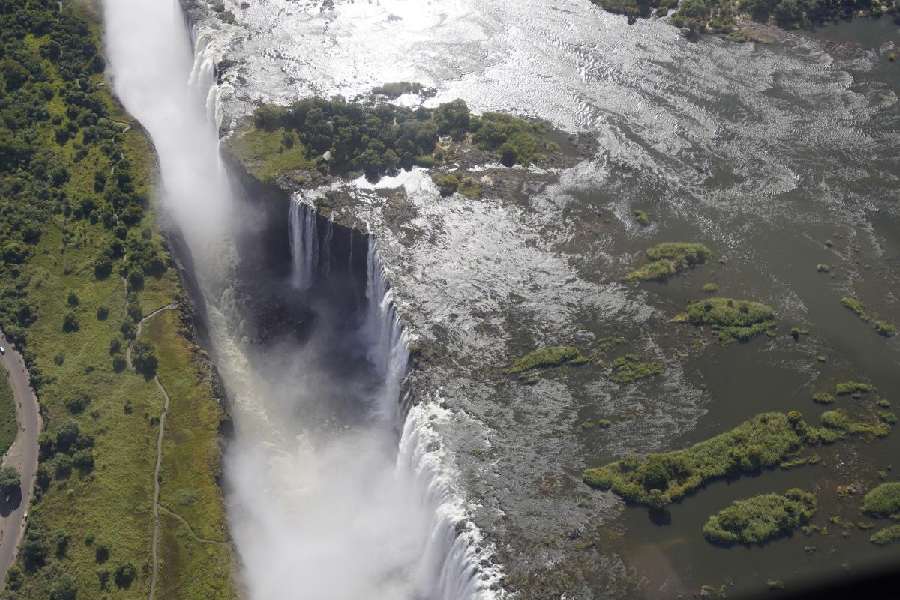I first became aware of Zimbabwe in 1983 due to Kapil Dev. His heroic 175 runs in the 1983 World Cup match made me aware about the country, which had just become independent in 1980. Zimbabwe got independence much later than other countries in the African continent. Over the years, misrule and hyperinflation under their president, Robert Mugabe, kept Zimbabwe in the news in international media. In 2017, after about 40 years of rule, Mugabe was overthrown by a coup. In 2024, Zimbabweans are still waiting for the ‘new Zimbabwe’ promised by their new president Emmerson Mnangagwa. The realities of everyday life remain harsh, although there is a renewed hope that the country will turn around economically.
While researching for our trip, a baffling fact made me more aware about the economic instability in Zimbabwe. It is a country where virtually no one uses their own currency. For local transactions, whatever be the denomination, USD is used. A young shopkeeper in Victoria Falls town candidly told me she doesn’t know what is the local currency now! I could not blame her as the national currency has changed four times in the past 15 years. The Zimbabwe Gold (ZiG) is the new currency from April 2024 but hardly anyone uses it.
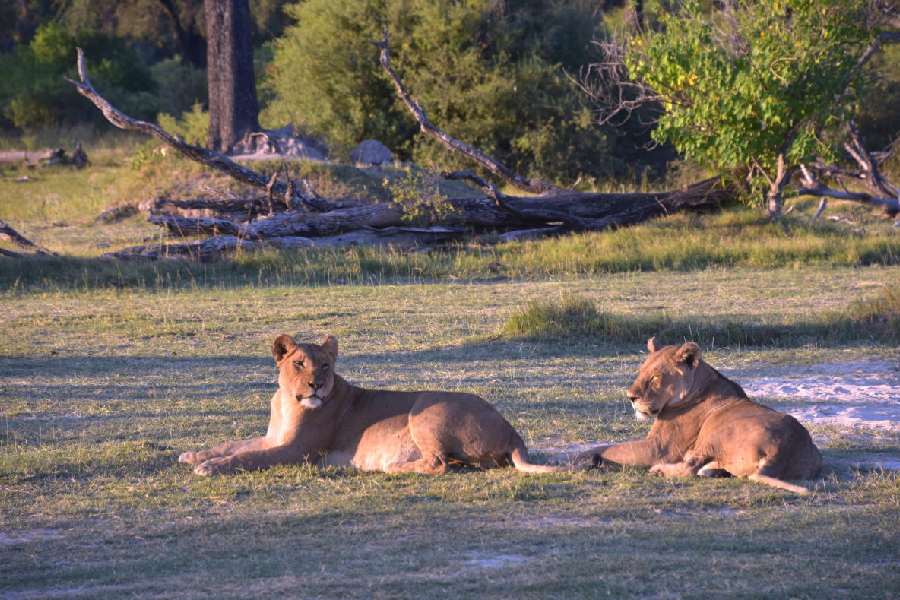
Hwange is known for its elephant herds and lions.
Across the gorge
My research assured me that it is absolutely safe to visit Zimbabwe now. The prime attractions are Victoria Falls, Hwange National Park and Mana Pools National Park. According to purists, if you want to experience the African Savannahs in its pristine tranquillity, head over to the national parks in Zimbabwe. The massive influx of tourists now in Kruger, Masai Mara, Serengeti and Ngorongoro Craters has perhaps spoiled the character of those places. Victoria Falls is the jewel in the crown of Zimbabwe. It is considered as one of the natural wonders of the world. It is spectacular.
I first saw Victoria Falls from a helicopter. It is on the Zambezi River, straddling the border between Zambia and Zimbabwe. It is the world’s largest stretch of falling water and is often cited as one of the Seven Natural Wonders.
The combination of the massive water flow, the mist rising from the falls, and the surrounding rainforest creates a breathtaking natural spectacle.
David Livingstone “discovered” Victoria Falls in 1855 and named it after Queen Victoria. The locals called it Mosi-oa-tunya, which means ‘the smoke that thunders’.
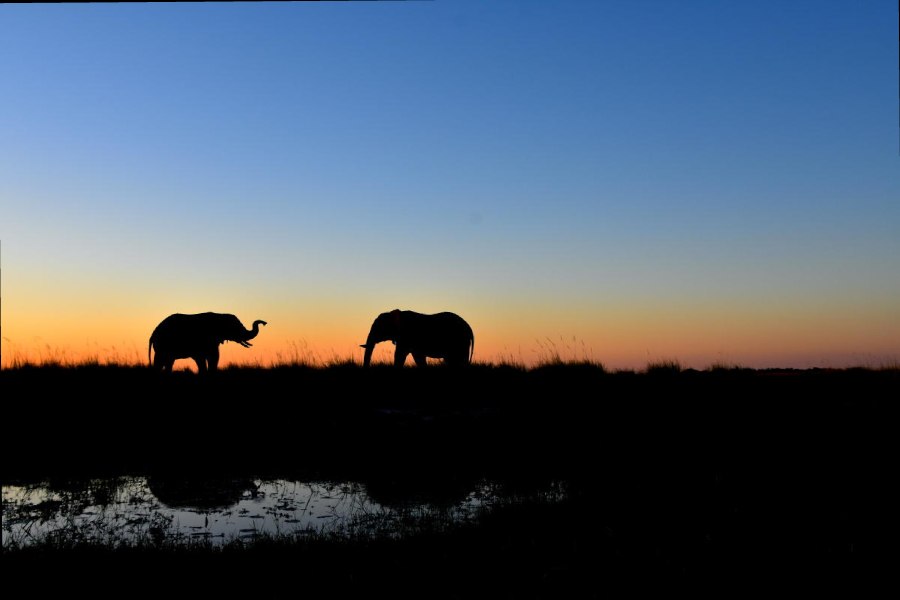
Elephants are the architects of the Okavango Delta. Even small shifts, like a one per cent drop in water, could affect the patterns of elephant movements.
This name really made sense when we hovered above the falls in our helicopter. The spectacular frontage of the falls, almost 2km in length, galling into a gorge with a roar, with a rainbow and mist across it, was a sight to behold. About two-thirds of the Victoria Falls frontage is on the Zimbabwean side and most of the falls plunge down this section.
We walked down and made our way through lush rainforest before stopping at different viewpoints along the gorge edge. It is a 45-60-minute leisurely walk starting with a statue of David Livingstone on the western edge of the chasm, and ending before passing the path from where one can see the iconic Victoria Falls Bridge, which connects Zambia and Zimbabwe.
After our walk across the gorge, we headed to Lookout Café. Personally, I have never been to any eatery anywhere in the world with such a sublime view of nature. It renewed my sense of awe and reverence for the natural world.
We sat there quietly for hours, sipping beer, and my adventurous self prompting me to try out the local delicacy — the crocodile kebab. It was honestly wonderful!
There is lot to do in Victoria Falls, including a series of activities from river rafting in the Zambezi river, bungee jumping and taking a trip to the Zambezi National Park.
One slightly offbeat dining experience we chose was to have one of our dinners at the Dusty Road Township Experience. Dusty Road is a traditional Zimbabwean restaurant where food is cooked the Zimbabwean way: on open fires and in cast iron pots and ovens. The décor is offbeat. The restaurant is outdoors in a garden, under shades of trees, and rooms have trinkets that typify a Zimbabwean household. The toilet had washed undergarments and slippers on a clothesline above the washbasin, which I felt was pretty novel!
A Zimbabwean safari
From Victoria Falls, we drove to Camp Hwange. It is on a private concession in the southern reaches of Hwange National Park, Zimbabwe’s biggest game reserve. Named after a local Nhanzwa chief, the area was designated a national park all the way back in 1929. The best time to visit is the dry season, which is from April to October.

Planning a trip to Botswana requires a lot of planning, simply because of the range of places one can visit.
Zimbabwean safari guides are regarded as the best all over the world and we realised that it is true. There are a few unique features of a Zimbabwean safari. Walking safaris are a highlight and the other is waiting for the wildlife in a “hide”. Hides refer to specially-built structures designed for safe and close-up wildlife viewing. They are strategically located near waterholes or other areas frequented by animals allowing visitors to observe them without disturbing their natural behaviours. Also, as Camp Hwange is on a private concession, we could go for night safaris. The combination of all these factors made our stay in Hwange a memorable one. Hwange is known for its elephant herds and lions. The icing on the cake for us was sighting a leopard during a night safari, and sable antelopes.
Back to Botswana
Our next destination was Botswana (again!). Botswana is described as one of the prettiest places on earth and I agree. The main attraction of Botswana is the Okavango Delta. The source of water in Okavango Delta are the rivers in semi-arid Angola. The water flows through Namibia and into Botswana as the Okavango, then spills into a fan-shaped 4,600sq m wetland before vanishing into the sands of the Kalahari Desert.
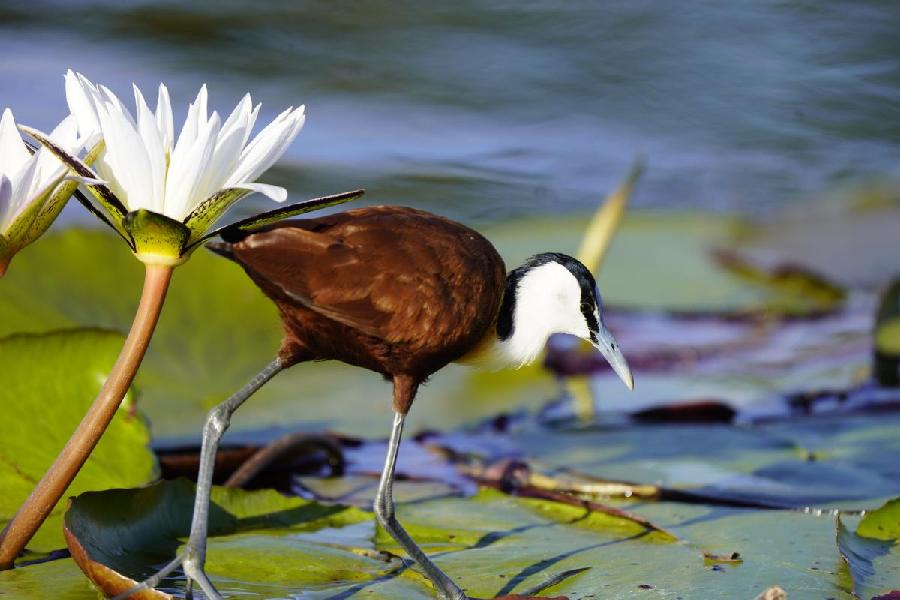
The source of water in Okavango Delta is the rivers in semi-arid Angola. When I first saw the delta, I was reminded of the series of paintings of water lilies by Claude Monet.
UNESCO has protected the delta for a decade, but it is extremely vulnerable to minor shifts with respect to the amount of water flowing in from Angola. A decrease in rainfall due to global warming, or water being diverted elsewhere due to mining and timber industry in Angola can upset the precarious ecosystem of the delta. Even small shifts, like a one per cent drop in water, could affect the patterns of elephant movements. Elephants are the architects of the delta whose dung contains the seeds from which the palm islands grow.
When I first saw the delta, I was reminded of the series of paintings of water lilies by Claude Monet, the French impressionist painter. The image of the water lilies stuck in my mind and for some reason I imagined them as pirouetting ballerinas. Much later, when I analysed my thoughts, I realised somehow, I had coalesced the landscape of the delta, with paintings of water lilies by Monet and ballerinas by Degas, both French impressionists, whom I love.

Words fail to describe the beauty of Okavango Delta. For example, there is no noise except occasional grunts from hippos, who do not want to be disturbed.
I do not have the ability to describe the beauty of Okavango Delta in words. It will be etched in my mind as a large landscape painting, with water lilies as ballerinas pirouetting in water, sunlight painting the water in different shades of blue, dragonflies flitting through the air, with their wings catching the sunlight to make them look like stained jewels and birdsongs filling the air. There is nothing else, no noise, except occasional grunts from hippos, who do not want to be disturbed. In the distance, you see the elephant herds. When the sun sets, you see only their silhouettes.
I am often asked what sets Botswana apart from other safari destinations in Africa. The answers, in brief, are that it has a much more diverse landscape, a range of water-based activities and it is much more remote and pristine. And yes, the cost! Botswana has opted for low-impact/low-volume tourism and conservation. The result is a less-crowded safari experience but at a higher cost.
Plan carefully
On this trip, we chose to go to Chobe National Park, which is the most visited park in Botswana, and a small but very picturesque lodge called Okuti Camps in the Okavango Delta.
In Botswana, you can see the ‘big five’, including rhinos but, unfortunately, rhinos are extinct in Zimbabwe due to poaching. However, I feel the beauty of Botswana lies in the landscape, and smaller animals like meerkats, wild dogs and birds.
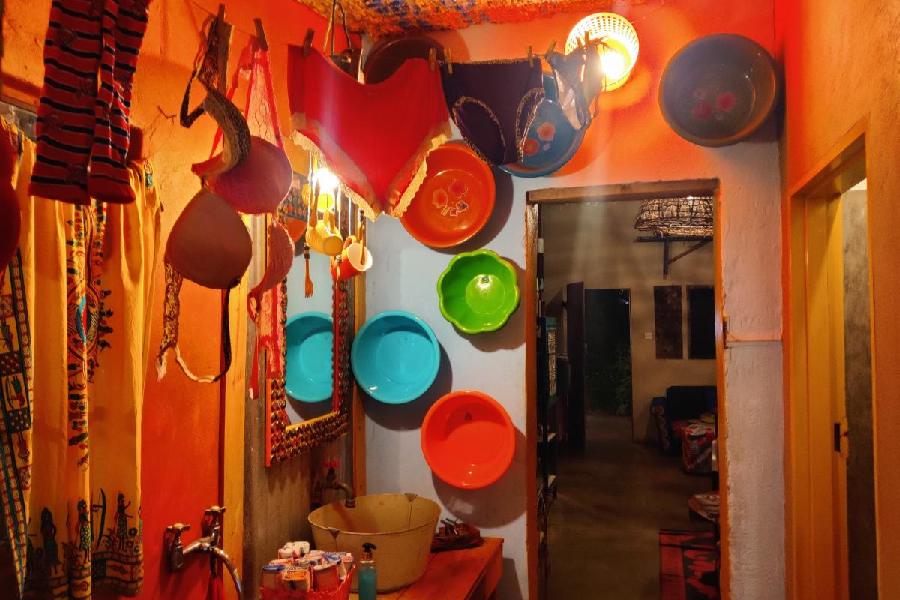
Dusty Road is a traditional Zimbabwean restaurant where food is cooked the Zimbabwean way: on open fires and in cast iron pots and ovens. The décor is offbeat.
A trip to Botswana requires a lot of planning, simply because of the range of places one can visit, apart from the Okavango Delta. Even within the delta, which is about 4,600sq km, one can choose to stay in more than one camp. In our previous trip to Botswana in 2017, we had been to the Kalahari Desert, the Makgadikgadi Salt Pans, Savuti National Park and Okavango Delta.
For Zimbabwe, it is easier, because apart from Victoria Falls, the two other options are Hwange National Park, which is more accessible, and Mana Pools, which is remoter. For Indian tourists, Zimbabwe offers visa on arrival, unlike Botswana. The travel between destinations in these two countries is mostly through small aircraft and in one of our flights we were in the tiniest of aircraft I could have imagined. It was a four-seater plane and the 75-minute flight seemed never-ending.
I believe that travelling in the wilderness reconnects you to the essentials. For us, that’s Africa.
Dr Jai Ranjan Ram is a senior consultant psychiatrist and co- founder of Mental Health Foundation (www.mhfkolkata.com). Find him on Facebook @Jai R Ram and on Instagram @ jai_psychiatrist
